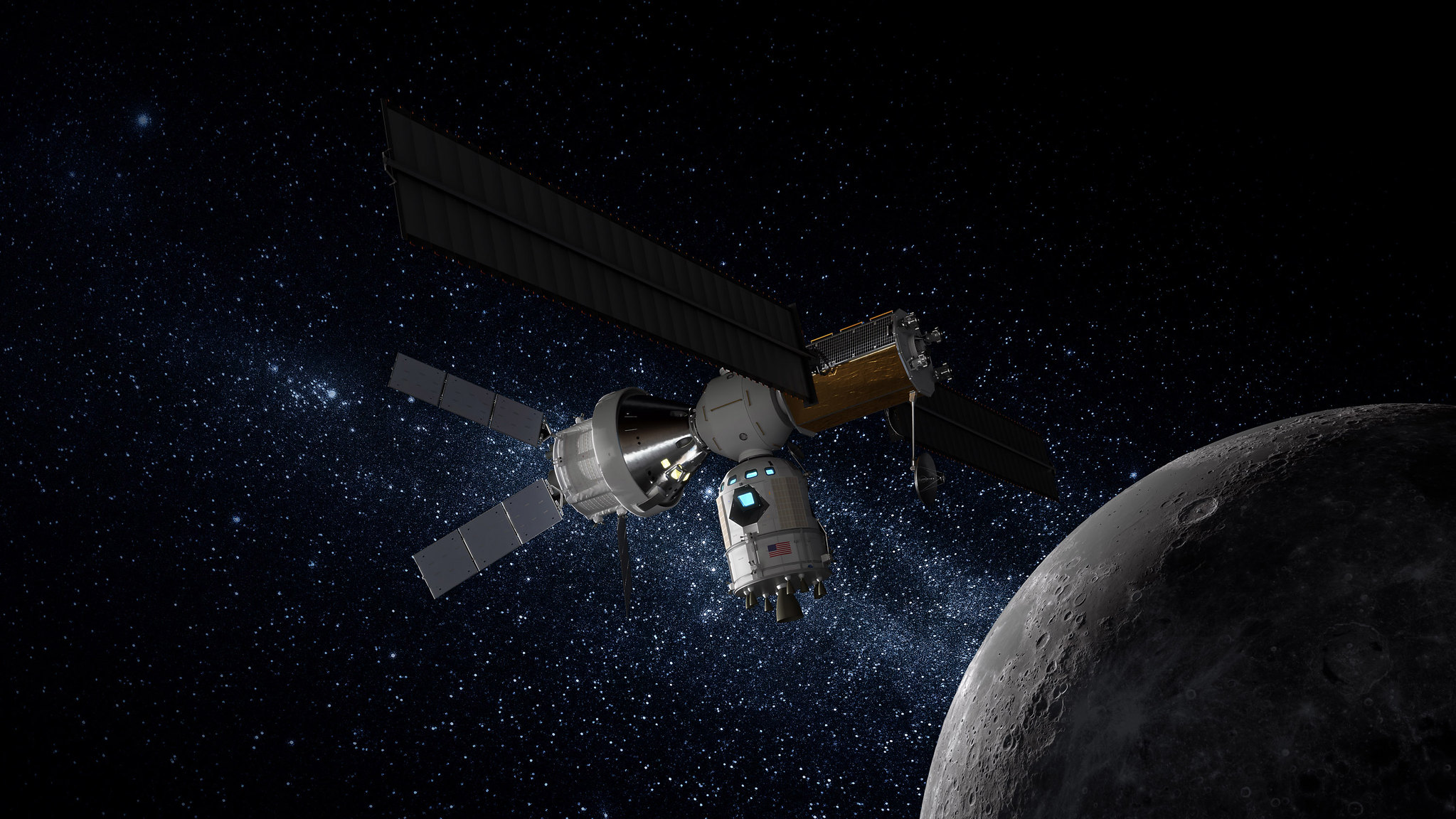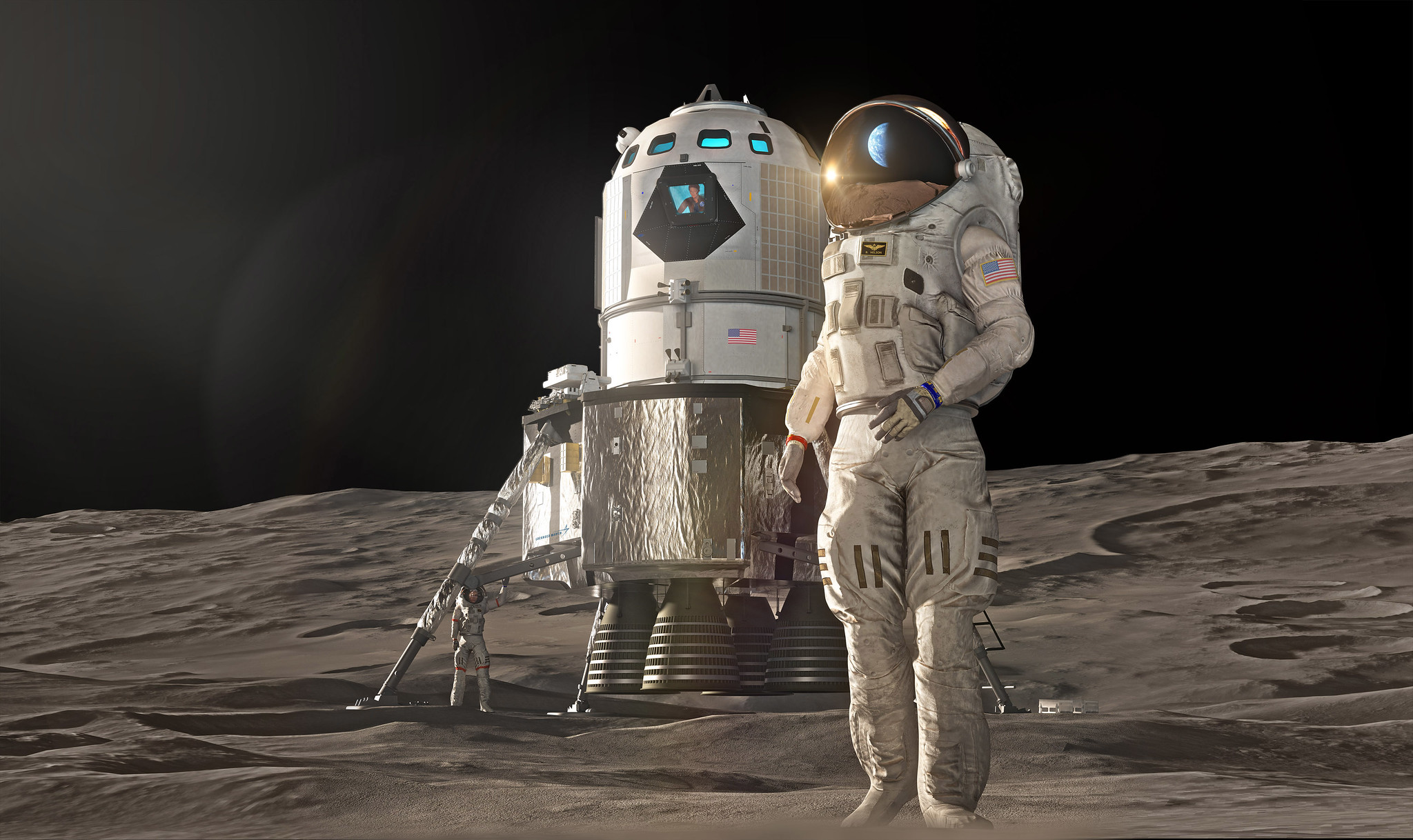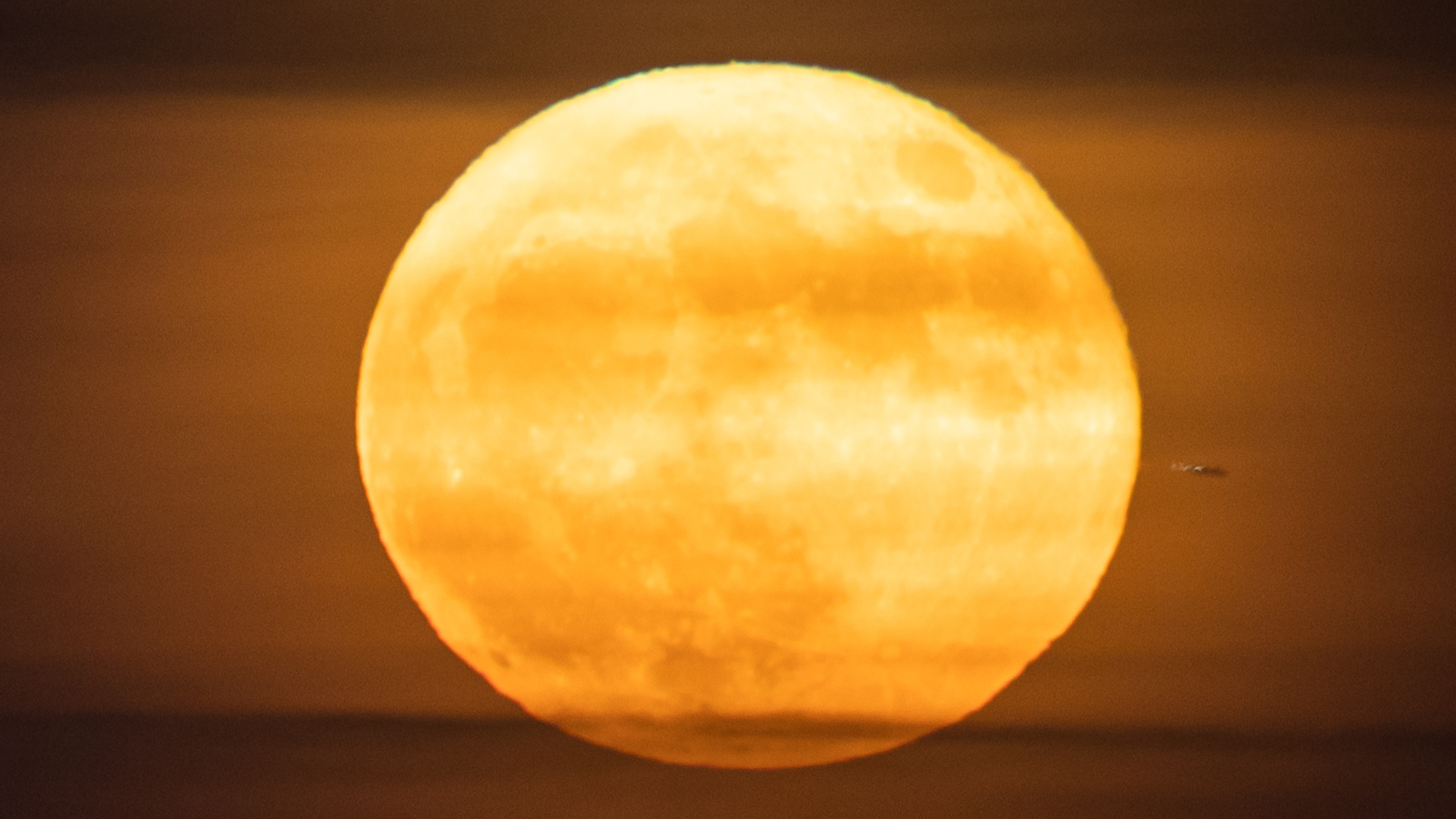Lockheed Martin Proposes 'Early Gateway' to Put Astronauts on the Moon by 2024
Here's how Lockheed wants to put "boots on the moon."
COLORADO SPRINGS, Colo. — The private aerospace company Lockheed Martin unveiled new details about its proposed architecture for landing NASA astronauts on the moon in 2024, making the announcement here at the 35th Space Symposium on Wednesday (April 10).
Vice President Mike Pence, who is head of the National Space Council, directed NASA to speed up its plans to land humans on the moon and to target a human moon landing in 2024, or four years earlier than NASA had been planning. Now, the agency's commercial partners, who are providing much of the components for NASA's moon plans, must also scramble to meet the agency's new goal.
NASA has already contracted Lockheed Martin to build the Orion Multipurpose Crew Vehicle, a spacecraft that is scheduled to launch astronauts into orbit for the first time in June 2020. That mission, known as Exploration Mission-1 (EM-1), will be the first step in Lockheed's path to achieving a moon landing for NASA. During EM-1, the uncrewed Orion spacecraft will fly around the moon in a weeklong round trip.
Related: Take a Look Inside Lockheed Martin's Proposed Lunar 'Gateway' Habitat for Astronauts

The second phase of Lockheed's moon program involves launching what the company calls an "early Gateway," or a bare-bones version of NASA's proposed Lunar Orbital Platform-Gateway, a lunar space station that will serve as sort of a home base for astronauts traveling to and from the moon. The early Gateway would include only the elements that are critical to a 2024 moon landing: a propulsion module and a docking port.
In a speech here at the Space Symposium on Tuesday (April 9), NASA Administrator Jim Bridenstine said that to achieve the landing in 2024, the agency would need to not only speed up its original plans for a landing in 2028, but also get rid of parts of its human exploration program that don't directly contribute to a landing in 2024.
Once the early Gateway is in orbit around the moon, then come the "meat and potatoes" of the mission: the lander elements that would bring astronauts down to the surface. That would happen in 2022, Lockheed Martin Director of Human Space Exploration Strategy Rob Chambers said in the news conference. The lander elements include an ascent stage, a descent stage and a command deck. Before any astronauts visit the Gateway and land on the moon, the lander's components will already be flight-proven.
Get the Space.com Newsletter
Breaking space news, the latest updates on rocket launches, skywatching events and more!

The next step in Lockheed's plan to land on the moon will come with Exploration Mission-2 (EM-2), the first crewed test flight of Orion, which is scheduled for 2022 or 2023, Chambers said. If all goes according to plan, Exploration Mission-3 could launch on a mission to put astronauts on the moon in 2023 or 2024.
Because NASA and Lockheed are working on an accelerated schedule now, they need to find a way to put astronauts on the surface of the moon as quickly as possible without compromising their safety. "Our priority is to preserve safety," Chambers said, adding that Lockheed's lunar lander uses a lot of the same technology as the company's Orion spacecraft, which will have already flown five times before astronauts finally take it to the moon.
Lockheed officials could not yet comment on the cost of their new moon-mission architecture, because NASA has not yet contracted the company to build it. And the agency may request changes that would affect the project's price. If NASA decides to go with Lockheed's plan, the company will "need to be bending metal" by 2020, Chambers said. "I hope somebody ordered a bunch of aluminum!"
- Lockheed Martin Unveils Plans for Huge Reusable Moon Lander for Astronauts
- Private Moon Landers Could Help NASA's Next Giant Leap in Lunar Exploration
- Astronauts on the Moon in 2024? US Can't Do It Alone, NASA Chief Says
Email Hanneke Weitering at hweitering@space.com or follow her @hannekescience. Follow us on Twitter @Spacedotcom and on Facebook.
Join our Space Forums to keep talking space on the latest missions, night sky and more! And if you have a news tip, correction or comment, let us know at: community@space.com.

Hanneke Weitering is a multimedia journalist in the Pacific Northwest reporting on the future of aviation at FutureFlight.aero and Aviation International News and was previously the Editor for Spaceflight and Astronomy news here at Space.com. As an editor with over 10 years of experience in science journalism she has previously written for Scholastic Classroom Magazines, MedPage Today and The Joint Institute for Computational Sciences at Oak Ridge National Laboratory. After studying physics at the University of Tennessee in her hometown of Knoxville, she earned her graduate degree in Science, Health and Environmental Reporting (SHERP) from New York University. Hanneke joined the Space.com team in 2016 as a staff writer and producer, covering topics including spaceflight and astronomy. She currently lives in Seattle, home of the Space Needle, with her cat and two snakes. In her spare time, Hanneke enjoys exploring the Rocky Mountains, basking in nature and looking for dark skies to gaze at the cosmos.
